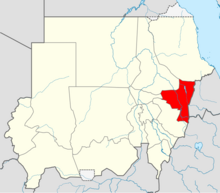백조자리 28
28 Cygni| 관측 데이터 에폭 J2000 이쿼녹스 J2000 | |
|---|---|
| 별자리 | 백조자리 |
| 우측 상승 | 20h 09m 25.61909s[2] |
| 탈위임 | +36° 50′ 22.5961″[2] |
| 겉보기 크기 (V) | 4.93[3] |
| 특성. | |
| 스펙트럼형 | B2.5 V 또는[4] B2 IV(e)[5] |
| B-V색지수 | −0.139±0.004[3] |
| 변수형 | SX 아리[6] |
| 아스트로메트리 | |
| 방사 속도 (Rv) | -0.36±2.59km[7]/s |
| 고유 운동 (μ) | RA: +2.728[2] mas/yr Dec.: +15.562[2]mas/yr |
| 시차 (π) | 5.2947 ± 0.2255[2] 마스 |
| 거리 | 620 ± 30 리 (105 ± 8pc) |
| 절대치수 (MV) | −2.56[3] |
| 세부 사항 | |
| 미사 | 9.5±0.3[8] M☉ |
| 반지름 | 5.7[9] R☉ |
| 루미도 | 1,353.22[10] L☉ |
| 표면 중력 (log g) | 3.983[11] cgs |
| 온도 | 11,338[10] K |
| 회전 속도 (v sin i) | 320km[9]/s |
| 나이 | 22.1±2.8[8] 마이어 |
| 기타 지정 | |
| 데이터베이스 참조 | |
| 심바드 | 자료 |
28 시그니(Cogni)는 시그너스(Cognus)의 북쪽 별자리에 있는 단일[13][14] 별이다.그것은 희미한 청백색의 후아 항성이지만 육안으로는 4.93의 외관상으로 볼 수 있다.[3]연간 시차 변화량 5.3 mas로 추정된 28 cyg까지의 거리는 약 620광년이다.[2]절대 진도 -2.56으로 [3]항성이 불과 10파섹(33광년) 떨어져 있었다면 밤하늘에서 가장 밝은 별 시리우스보다 더 밝을 것이라는 의미다.
이것은 Lesh(1968년) 당 B2.5V의 별 분류를 가진 B형 주계열성이다.[4]실레트박(1982)은 B2 IV(e)의 한 부류를 발견했는데,[5] 이것은 이것이 더 진화된 아지구성임을 암시할 것이다.그것은 Be star이다. 즉, 스펙트럼은 별 주위를 도는 케플러안 궤도에 분출된 가스의 원반 때문에 방출선을 표시한다.항성은 두 개 이상의 주기가 있는 단기 변동성을 보이며,[9] 사머스 외 (2017)에 의해 SX 아리에티스 변수로 분류된다.[6]그것은 320 km/s의 예상 회전 속도로 빠르게 회전하고 있으며, 임계 회전수의 80%로 추정된다.이것은 이 별에게 극지방의 5.7배에서 태양 반경의 6.5배까지 적도의 불룩함을 주는 것이다.[9]
참조
- ^ "MAST: Barbara A. Mikulski Archive for Space Telescopes". Space Telescope Science Institute. Retrieved 8 December 2021.
- ^ a b c d e f Brown, A. G. A.; et al. (Gaia collaboration) (August 2018). "Gaia Data Release 2: Summary of the contents and survey properties". Astronomy & Astrophysics. 616. A1. arXiv:1804.09365. Bibcode:2018A&A...616A...1G. doi:10.1051/0004-6361/201833051. 이 소스에 대한 가이아 DR2 기록 VizieR.
- ^ a b c d e Anderson, E.; Francis, Ch. (2012), "XHIP: An extended hipparcos compilation", Astronomy Letters, 38 (5): 331, arXiv:1108.4971, Bibcode:2012AstL...38..331A, doi:10.1134/S1063773712050015, S2CID 119257644.
- ^ a b Lesh, Janet Rountree (December 1968), "The Kinematics of the Gould Belt: an Expanding Group?", Astrophysical Journal Supplement, 17: 371, Bibcode:1968ApJS...17..371L, doi:10.1086/190179.
- ^ a b Slettebak, A. (1982), "Spectral types and rotational velocities of the brighter Be stars and A-F type shell stars", Astrophysical Journal Supplement Series, 50: 55–83, Bibcode:1982ApJS...50...55S, doi:10.1086/190820, 80
- ^ a b Samus, N. N.; et al. (2017), "General Catalogue of Variable Stars", Astronomy Reports, 5.1, 61 (1): 80–88, Bibcode:2017ARep...61...80S, doi:10.1134/S1063772917010085, S2CID 125853869.
- ^ Becker, Juliette C.; et al. (April 2015), "Extracting Radial Velocities of A- and B-type Stars from Echelle Spectrograph Calibration Spectra", The Astrophysical Journal Supplement Series, 217 (2): 13, arXiv:1503.03874, Bibcode:2015ApJS..217...29B, doi:10.1088/0067-0049/217/2/29, S2CID 33968873, 29.
- ^ a b Tetzlaff, N.; et al. (January 2011), "A catalogue of young runaway Hipparcos stars within 3 kpc from the Sun", Monthly Notices of the Royal Astronomical Society, 410 (1): 190–200, arXiv:1007.4883, Bibcode:2011MNRAS.410..190T, doi:10.1111/j.1365-2966.2010.17434.x, S2CID 118629873.
- ^ a b c d Baade, D.; et al. (March 2018), "Short-term variability and mass loss in Be stars. III. BRITE and SMEI satellite photometry of 28 Cygni", Astronomy & Astrophysics, 610: 17, arXiv:1708.07360, Bibcode:2018A&A...610A..70B, doi:10.1051/0004-6361/201731187, S2CID 119076967, A70.
- ^ a b McDonald, I.; et al. (2012), "Fundamental parameters and infrared excesses of Hipparcos stars", Monthly Notices of the Royal Astronomical Society, 427 (1): 343–357, arXiv:1208.2037, Bibcode:2012MNRAS.427..343M, doi:10.1111/j.1365-2966.2012.21873.x, S2CID 118665352.
- ^ Frémat, Y; et al. (2005), "Effects of gravitational darkening on the determination of fundamental parameters in fast-rotating B-type stars", Astronomy and Astrophysics, 440 (1): 305, arXiv:astro-ph/0503381, Bibcode:2005A&A...440..305F, doi:10.1051/0004-6361:20042229, S2CID 19016751.
- ^ "28 Cyg". SIMBAD. Centre de données astronomiques de Strasbourg. Retrieved 2019-01-11.
- ^ Eggleton, P. P.; Tokovinin, A. A. (September 2008), "A catalogue of multiplicity among bright stellar systems", Monthly Notices of the Royal Astronomical Society, 389 (2): 869–879, arXiv:0806.2878, Bibcode:2008MNRAS.389..869E, doi:10.1111/j.1365-2966.2008.13596.x, S2CID 14878976.
- ^ Wang, Luqian; et al. (February 2018), "Detection of Additional Be+sdO Systems from IUE Spectroscopy", The Astrophysical Journal, 853 (2): 10, arXiv:1801.01066, Bibcode:2018ApJ...853..156W, doi:10.3847/1538-4357/aaa4b8, S2CID 119252820, 156



